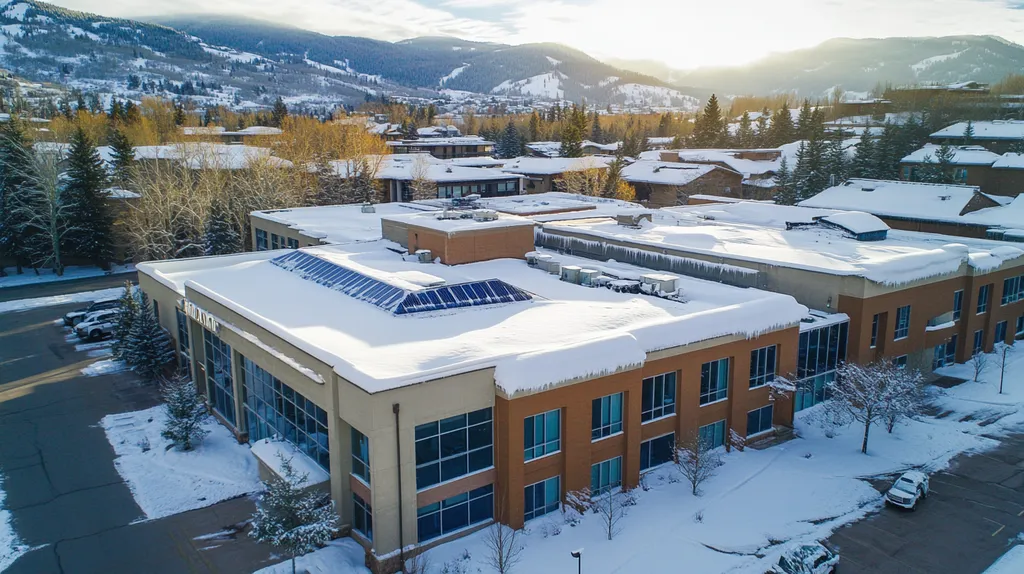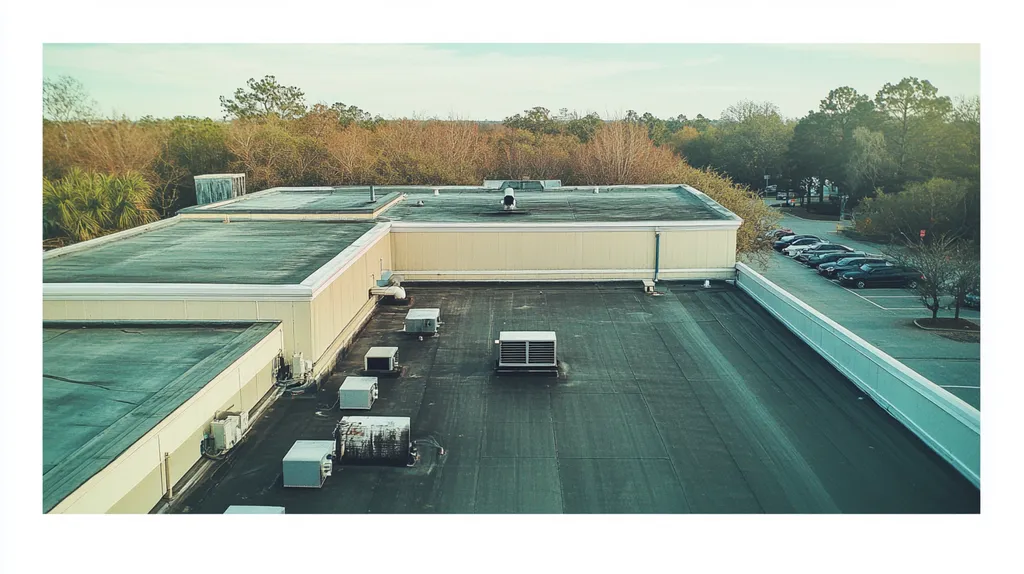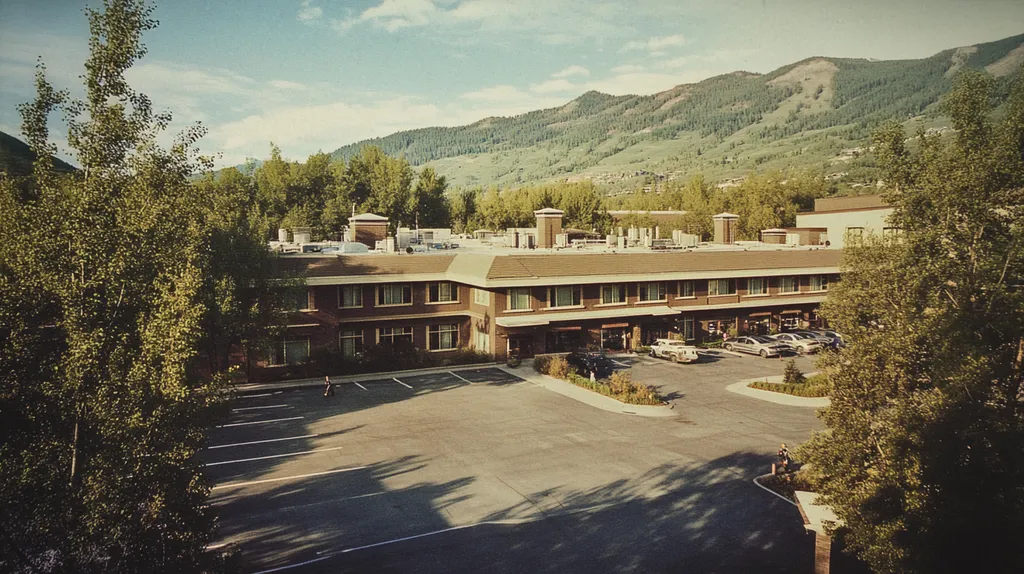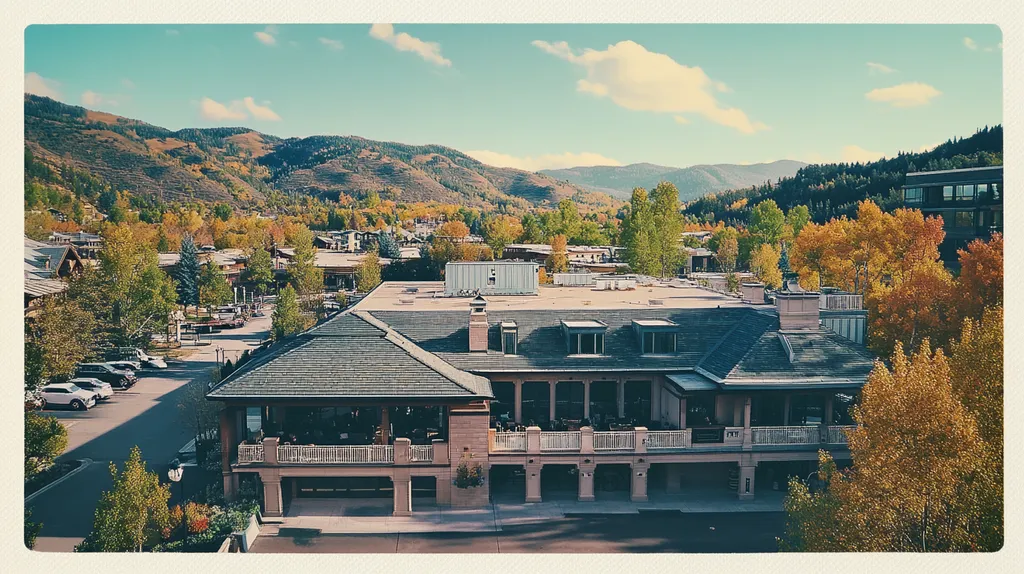Commercial buildings waste over $30 billion annually on excess cooling costs due to inefficient roofing systems, with traditional dark roofs absorbing up to 95% of solar energy.
As energy costs continue to rise and environmental regulations tighten, understanding solar reflectance has become crucial for facility managers and building owners.
This comprehensive guide examines the science behind solar reflective roofing, practical implementation strategies, and proven methods to optimize energy efficiency while extending roof lifespan.
SECTION 1: FUNDAMENTAL CONCEPTS
Rising energy costs and environmental concerns have pushed commercial roofing efficiency to the forefront of facility management. Studies show that inefficient roofing systems can increase cooling costs by up to 40% in commercial buildings. Understanding and implementing proper solar reflectance and thermal management strategies has become crucial for sustainable building operations and cost control.
Introduction to Solar Reflectance
Solar reflectance represents a roof’s ability to redirect solar radiation away from the building surface. This fundamental property determines how much heat enters the building through the roof structure.
Modern roofing materials offer varying degrees of solar reflectance, from basic dark materials reflecting only 5-10% of solar energy to advanced cool roofing systems reflecting up to 85%. This difference directly impacts cooling requirements and energy consumption.
Temperature variations between reflective and non-reflective roofs can exceed 50°F during peak summer conditions. This substantial difference affects not only energy costs but also the structural integrity of roofing materials.
Proper maintenance of reflective surfaces is essential, as dirt accumulation and weathering can reduce performance by 15-20% over time.
Understanding the Solar Reflectance Index
The Solar Reflectance Index (SRI) provides a standardized way to compare different roofing materials’ thermal performance. This comprehensive measure accounts for both solar reflectance and thermal emittance on a scale of 0 to 100.
Low-sloped commercial roofs must maintain a minimum aged solar reflectance of 0.55 and minimum aged thermal emittance of 0.75, or minimum aged SRI of 64. (source: Cool Roof Rating Council)
Higher SRI values indicate better thermal performance. A typical black roof has an SRI of 0, while a standard white roof might reach 80 or higher, demonstrating the dramatic performance difference between materials.
Building codes increasingly reference SRI requirements, making it a crucial factor in roofing material selection and compliance planning.
Thermal Emittance and Energy Efficiency
Thermal emittance measures how effectively a roof surface releases absorbed heat back into the atmosphere. This property works in conjunction with solar reflectance to determine overall roof thermal performance.
Materials with high thermal emittance can release up to 90% of absorbed heat, preventing it from transferring into the building. This capability becomes particularly important during nighttime hours when solar reflection isn’t active.
The combination of high solar reflectance and thermal emittance can reduce roof surface temperatures by 50-60°F compared to traditional roofing materials. This reduction translates directly into lower cooling costs.
Seasonal variations affect thermal emittance performance, making it essential to select materials optimized for local climate conditions and building use patterns.
SECTION 2: SYSTEM COMPONENTS
The selection and integration of roofing system components directly impacts building energy costs and environmental footprint. Modern commercial buildings face unprecedented pressure to optimize energy performance while maintaining structural integrity. A well-designed roofing system combining appropriate materials, coatings, and insulation can reduce cooling costs by up to 40% and significantly extend roof lifespan.
Roofing Material Selection Criteria
Solar reflective roofs can dramatically lower urban air temperatures while delivering substantial energy savings through reduced cooling requirements. Beyond immediate cost benefits, these materials help improve local air quality and reduce environmental impact. (source: U.S. Department of Energy)
Material durability plays a crucial role in maintaining long-term reflective performance. High-quality reflective materials can retain up to 80% of their initial solar reflectance after three years of exposure, while lower-quality alternatives may degrade significantly faster.
Climate considerations should guide material selection, as different regions require varying levels of solar reflectance and thermal resistance. Hot climates benefit most from maximum reflectivity, while mixed climates may need balanced properties for year-round performance.
Reflective Coatings and Membranes
Modern reflective coatings provide a cost-effective solution for improving roof solar performance. These specialized materials can increase solar reflectance by 50-75% compared to uncoated surfaces, dramatically reducing heat absorption.
Application timing and preparation significantly impact coating effectiveness. Proper surface cleaning and appropriate weather conditions during installation ensure optimal adhesion and performance longevity.
Regular maintenance of reflective coatings helps maintain their effectiveness. Semi-annual inspections and cleaning can prevent performance degradation caused by dirt accumulation and environmental factors.
Insulation and Ventilation Systems
Proper insulation serves as the foundation of roof energy efficiency. The right combination of insulation materials and thickness can reduce heat transfer by up to 85%, leading to significant energy savings in both cooling and heating seasons.
Ventilation design must account for building use patterns and local climate conditions. Adequate air movement prevents moisture accumulation while helping regulate temperature differences between roof layers.
Integration between insulation and ventilation components requires careful planning. Proper spacing, vapor barriers, and air gaps ensure system components work together effectively while preventing condensation issues.
SECTION 3: IMPLEMENTATION METHODS
Energy-efficient roofing represents a critical opportunity for commercial properties to reduce operational costs and environmental impact. Studies show that poorly designed roofing systems waste up to 40% of cooling energy, directly impacting bottom-line expenses. With rising energy costs and stricter environmental regulations, implementing effective roofing solutions has become essential for sustainable building operations.
Designing Energy-Efficient Roofing Systems
Successful energy-efficient roof design begins with comprehensive site analysis and climate consideration. Local weather patterns, building orientation, and seasonal temperature variations must guide material selection and system configuration.
Material selection should prioritize both immediate and long-term performance metrics. Advanced reflective materials can maintain up to 80% of their initial performance over a decade when properly specified and maintained.
Structural considerations must account for potential future modifications, including solar panel installation or green roof conversion. This forward-thinking approach prevents costly retrofits and maximizes return on investment.
Integration of smart monitoring systems enables real-time performance tracking and predictive maintenance. These technologies can identify efficiency losses before they significantly impact energy consumption.
Installation Best Practices for Reflective Roofs
Solar reflective roofs require precise installation techniques to achieve optimal performance. Surface preparation, material handling, and seam construction directly impact long-term energy efficiency and system durability. Solar reflective roofs, when properly installed, can lower urban air temperatures while delivering substantial energy savings through reduced cooling requirements. (source: U.S. Department of Energy)
Quality control measures during installation should include regular thermal imaging and moisture testing. These diagnostic tools help ensure uniform coverage and identify potential weak points before project completion.
Weather conditions during installation significantly impact system performance. Temperature, humidity, and wind speeds must fall within manufacturer-specified ranges to ensure proper curing and adhesion.
Post-installation verification should include comprehensive testing of reflective properties and thermal performance. This baseline data enables accurate tracking of system efficiency over time.
Integrating Solar PV Systems
Solar PV integration requires careful coordination between roofing and renewable energy systems. Load calculations must account for both current equipment weight and future panel additions.
Mounting systems should minimize roof penetrations while maintaining water-tight integrity. Advanced attachment methods can preserve reflective properties while securing solar equipment.
Cable management and conduit placement need strategic planning to prevent shade on panels and maintain roof drainage patterns. Proper spacing ensures optimal airflow and prevents heat buildup under arrays.
Regular maintenance protocols should address both roofing and solar components. Combined inspections can identify potential issues affecting either system’s performance while optimizing service efficiency.
SECTION 4: MAINTENANCE REQUIREMENTS
Maintaining solar reflective roofing systems represents a critical investment protection strategy that directly impacts building energy costs. Studies show that poorly maintained reflective roofs can lose up to 50% of their energy-saving capabilities within the first three years. Without proper maintenance, even the most advanced roofing systems deteriorate rapidly, leading to increased cooling costs and premature replacement needs.
Regular Inspection and Cleaning
Professional roof inspections should occur at minimum twice annually, with additional checks following severe weather events. These inspections must evaluate both the physical condition of roofing materials and their reflective properties to maintain optimal energy performance.
Surface contamination can reduce solar reflectance by up to 40% within the first year. Regular cleaning removes dirt, debris, and biological growth that diminish reflective properties and accelerate material degradation.
Solar reflective roofs, when properly maintained, can lower urban air temperatures while delivering substantial energy savings through reduced cooling requirements. (source: U.S. Department of Energy)
Documentation of inspection findings and cleaning activities creates valuable performance tracking data. This information helps optimize maintenance schedules and validate warranty claims while identifying trends in reflectance degradation.
Identifying and Repairing Leaks
Modern leak detection methods combine visual inspection with advanced diagnostic tools like infrared scanning and electronic leak detection. These technologies can identify moisture infiltration before it compromises insulation R-values or reduces reflective coating performance.
Swift repair response prevents minor issues from escalating into major problems. Even small leaks can saturate insulation, reducing its thermal resistance by up to 40% and negating the benefits of reflective surfaces.
Proper repair techniques must maintain surface reflectivity while ensuring watertight integrity. Using compatible materials and following manufacturer guidelines prevents repair-related degradation of reflective properties.
Post-repair verification should include both water testing and reflectance measurements. This comprehensive approach ensures repairs address both moisture protection and energy efficiency requirements.
Extending Roof Lifespan through Maintenance
Preventive maintenance programs can double or triple roof service life while maintaining optimal energy performance. Regular upkeep costs average just 1-2% of roof replacement value annually while preserving expensive reflective coatings and membranes.
Scheduled recoating of reflective surfaces prevents degradation of solar reflectance properties. Timing these applications before significant performance loss occurs maximizes energy savings and extends overall system longevity.
Climate-specific maintenance strategies account for local weather patterns and UV exposure levels. This targeted approach ensures maintenance efforts focus on the most relevant degradation factors for each facility.
Performance monitoring through energy consumption tracking validates maintenance effectiveness. Regular analysis of cooling costs helps quantify the ROI of maintenance activities while identifying areas needing additional attention.
SECTION 5: PERFORMANCE METRICS
Accurate measurement of roofing performance has become critical as energy costs continue to rise. Studies show that commercial buildings can waste up to 40% of their cooling energy through poorly performing roofs. Understanding and tracking key metrics enables facility managers to make data-driven decisions that significantly impact both operational costs and environmental footprint.
Measuring Solar Reflectance and Emittance
The fraction of sunlight that a surface reflects is called solar reflectance or albedo. White roofs reflect more sunlight than dark roofs, turning less of the sun’s energy into heat. (source: Cool Roofs & Cool Pavements Toolkit)
Field measurements using specialized equipment like reflectometers and emissometers provide crucial baseline data. These measurements should be taken at installation and regular intervals to track performance degradation over time.
Weather conditions and time of day significantly impact measurement accuracy. Testing should occur during clear sky conditions between 10 AM and 2 PM for most reliable results.
Documentation of measurements creates valuable historical data for comparing different roofing solutions and validating manufacturer claims about long-term performance.
Assessing Energy Savings and Cost Benefits
Energy savings analysis requires establishing clear baseline measurements before implementing reflective roofing solutions. This includes tracking both peak demand charges and total energy consumption patterns.
Advanced monitoring systems can isolate roof-related energy impacts from other building systems. This granular data helps quantify the direct financial benefits of reflective roofing investments.
Seasonal variations must be factored into savings calculations. While cooling cost reductions are most dramatic in summer months, some reflective systems may slightly increase winter heating requirements.
Return on investment calculations should include both direct energy savings and indirect benefits like extended roof life and reduced maintenance costs. This comprehensive approach often reveals payback periods shorter than initially estimated.
Evaluating Environmental Impact
Environmental impact assessment starts with calculating reduced carbon emissions from lower energy consumption. A typical commercial building can reduce its carbon footprint by several tons annually through optimized roof performance.
Urban heat island effect mitigation represents another crucial environmental benefit. Large-scale adoption of reflective roofing can reduce local air temperatures by up to 5 degrees Fahrenheit.
Stormwater management capabilities should be evaluated alongside thermal performance. Some reflective systems offer enhanced drainage and water retention properties that support broader environmental goals.
Documentation of environmental benefits supports green building certification efforts and demonstrates corporate sustainability commitment. This documentation increasingly influences tenant decisions and property valuations.
SECTION 6: OPTIMIZATION STRATEGIES
Commercial roofing optimization has become increasingly critical as energy costs continue to surge, with facilities facing up to 40% higher cooling expenses due to inefficient systems. Modern optimization strategies can transform existing roofs from energy liabilities into high-performance assets. By implementing targeted upgrades in reflectivity, ventilation, and smart building integration, facility managers can achieve substantial cost savings while meeting growing environmental requirements.
Enhancing Reflectivity through Upgrades
Solar reflective coatings represent one of the most cost-effective optimization strategies available. These specialized materials can increase roof reflectance by up to 75% when properly applied, dramatically reducing heat absorption and cooling loads.
Material selection plays a crucial role in optimization success. Modern white TPO membranes can achieve initial solar reflectance values above 0.85, while advanced ceramic coatings offer both high reflectivity and exceptional durability.
Solar reflective roofs, when properly optimized, can lower urban air temperatures while delivering substantial energy savings through reduced cooling requirements. (source: U.S. Department of Energy)
Maintenance protocols must evolve with upgrades. Regular cleaning and recoating schedules ensure optimized surfaces maintain their reflective properties, with some systems retaining 80% or more of initial performance after five years.
Improving Roof Ventilation for Efficiency
Strategic ventilation design can reduce peak roof temperatures by up to 45°F compared to poorly ventilated systems. Proper air movement prevents heat buildup in roof assemblies while helping regulate temperature differences between roof layers.
Modern ventilation solutions combine passive and active components. Ridge vents, soffit systems, and powered exhaust units work together to create consistent airflow patterns that maximize cooling efficiency.
Balanced intake and exhaust calculations are essential for optimal performance. Professional assessments determine precise ventilation requirements based on roof area, building use patterns, and local climate conditions.
Integration with existing HVAC systems enables coordinated temperature control. Smart ventilation systems can adjust airflow based on real-time conditions, optimizing energy usage throughout the day.
Integrating Roofing with Building Management Systems
Advanced monitoring systems provide real-time performance data that enables proactive optimization. Temperature sensors, moisture meters, and reflectance monitors feed continuous information to building management platforms.
Automated response protocols maximize efficiency gains. When sensors detect elevated roof temperatures, systems can automatically adjust HVAC operations, deploy shade structures, or activate supplemental cooling measures.
Predictive analytics help identify optimization opportunities before efficiency losses occur. Machine learning algorithms analyze performance patterns to recommend maintenance timing and upgrade priorities.
Integration with broader facility systems creates synergistic benefits. Combined data from roofing, HVAC, and lighting systems enables comprehensive energy optimization strategies that maximize return on investment.
The Bottom Line
With commercial buildings wasting over $30 billion annually on excess cooling costs, implementing effective solar reflective roofing solutions has become a critical business imperative.
Studies consistently show that optimized reflective roofing systems can reduce cooling expenses by 25-40% while extending roof lifespan by up to 15 years.
As energy costs continue rising and environmental regulations tighten, facility managers must prioritize solar reflectance in their roofing decisions or risk significant financial and compliance consequences.
Through proper material selection, professional installation, and systematic maintenance, commercial properties can transform their roofs from energy liabilities into high-performance assets that deliver measurable returns on investment.
The time for action is now – waiting only increases exposure to rising costs and missed savings opportunities.
FREQUENTLY ASKED QUESTIONS
Q. What is a commercial roof’s solar reflectance?
A. Solar reflectance measures how well a roof reflects solar radiation. Higher reflectance produces lower heat absorption, which can reduce cooling costs significantly and enhance energy efficiency in the building.
Q. How can an industrial roof reduce energy costs?
A. By selecting high-quality, energy-efficient materials and implementing reflective coatings, an industrial roof can effectively lower heat absorption. This minimizes cooling demands and leads to significant energy cost savings, particularly in warmer climates.
Q. What are the key components of an efficient commercial roofing system?
A. An efficient commercial roofing system integrates quality materials, reflective coatings, and optimal insulation. This combination helps retain cool air inside the building while reducing overall energy consumption during hotter months.
Q. What maintenance is needed for commercial roofs?
A. Regular inspections and cleanings are essential for maintaining commercial roofs. Proper upkeep prevents the accumulation of dirt that can diminish reflective properties, ensuring long-term efficiency and cost-effectiveness.
Q. How do I measure a commercial roof’s performance?
A. Performance measurement involves tracking solar reflectance and emittance and analyzing energy bills over time. Additional assessments, like thermal imaging, can provide valuable insights into how well the roof is functioning.
Q. What optimization strategies enhance roof performance?
A. Strategies include installing reflective coatings, improving insulation, and enhancing ventilation. These measures significantly reduce energy costs while improving roofing efficiency and extending the system’s overall lifespan.
Q. How does climate affect commercial roof materials?
A. Climate conditions heavily influence the selection of roofing materials. Hot climates benefit from highly reflective materials, while mixed climates may require a balance of thermal properties to optimize year-round performance.











